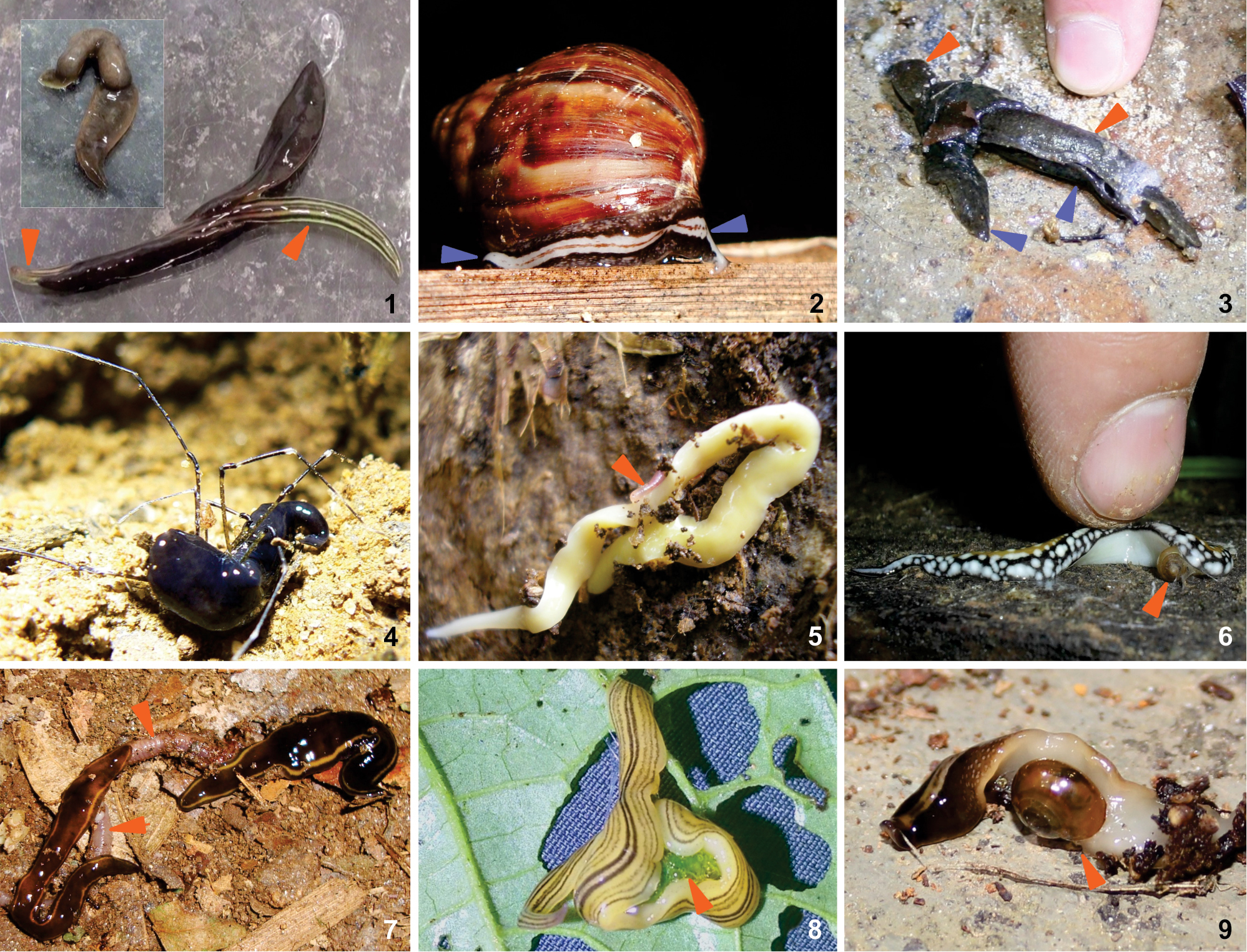
|
||
|
Photographs of land planarians feeding under laboratory conditions (1) and in nature (2–9). Orange arrowheads point to prey; blue arrowheads point to the predator flatworm. (1) Obama anthropophila capturing Issoca rezendei. Note the body margins bending onto the prey, thus preventing it from escaping even before being eaten (inset); (2) a young specimen of Obama burmeisteri feeding on the giant African snail (Ilhabela, SP); (3) Obama carinata handling a slug (Veronicellidae) (Parque Estadual da Serra da Cantareira, São Paulo, SP); (4) Cephaloflexa bergi eating a harvestman (Reserva Biológica Augusto Ruschi, ES); (5) Geobia subterranea eating an earthworm (Caxambu, MG); (6) Geoplana cf. chita disturbed while eating a snail to show the shell (São Sebastião, SP); (7) two specimens of Imbira marcusi simultaneously attacking an earthworm (Parque Estadual Intervales, SP); (8) Notogynaphallia cf. sexstriata eating an insect larva (Parque Estadual da Serra do Mar, SP); (9) Obama evelinae eating a land snail (Reserva Natural Municipal Nascentes de Paranapiacaba, Santo André, SP). |